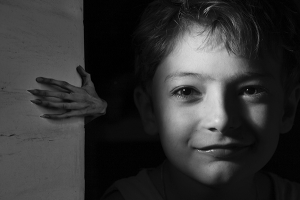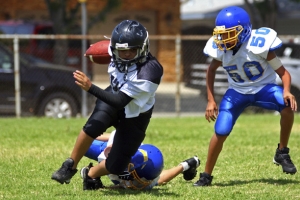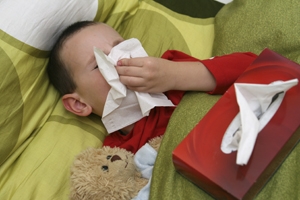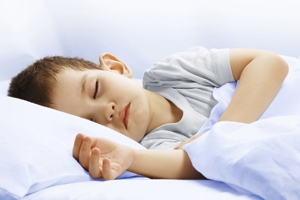
When it comes to the problem of children wetting the bed, the consolation for most parents is that most children usually outgrow bedwetting. Sadly, however, this is not always the case. Even when a child does eventually outgrow nocturnal enuresis, much of the psychological damage has already occurred. Fortunately, there is much you as a parent can do to help shepherd your child through and past these experiences with self-esteem intact.
1. Do NOT get angry with your child.
More importantly than what you do here may be what you don’t do. Whatever actions you decide to take, never get angry with him, blame him, put him down, embarrass him, punish him or spank him.
2. Reassure your child.
If your child wets the bed, reassure him that the problem is common and not his fault. Assure him you know he’s not wetting the bed on purpose. Emphasize that it doesn’t make him a bad person. Encourage your child to communicate openly with you about his bedwetting, while at the same time supporting discretion and protecting his privacy regarding the matter. Remain watchful that siblings don’t tease, embarrass, or humiliate him for having the problem. A convenient side benefit of giving your child compassionate support is that doing so tends to decrease recurrences of bedwetting.
3. Encourage more fluids during the daytime.
A common scenario is for children to drink insufficient amounts of fluids during the day and then feel thirsty at night, causing them to drink more before bedtime and possibly throughout the night. This creates an obvious risk for bedwetting that can easily be avoided by encouraging the child to drink more during the day. This will lead him to be less thirsty at night and therefore less likely to drink excess fluids before bedtime or during the night.
Proper hydration is best achieved by consuming smaller quantities of water at a time, consistently and frequently throughout the day. Think ahead. Encourage hydration, for example, by including a bottle of water in your child’s backpack before he leaves for school each day.
4. Eliminate caffeine.
Most families would be hard pressed to eliminate all dehydrating foods and beverages from their child’s diet. But the more you can restrict caffeinated foods and drinks, the more you eliminate a high risk factor for children prone to bedwetting. Caffeine (found in chocolate, sodas and black and green teas) is a diuretic, meaning it promotes urination.
5. Incorporate bathroom time into the bedtime routine.
Bedtime routines are a crucial part of sleep hygiene for children, because they work with the body’s own biorhythms to help facilitate smooth transitions between natural processes like eating, waking and sleeping. If you incorporate urination time into the child’s bedtime routine, that too can become one of the positive patterns ingrained in the child’s biorhythms. The child’s body may get used to urinating at the same times each night and adjust accordingly so as to eliminate the bladder completely during these one or two pre-bedtime bathroom visits. Suggested is to have the child urinate twice immediately prior to going to bed, the second time just five or ten minutes after the first.
6. Encourage calming, relaxing pre-bedtime activities.
Another way you can use your child’s bedtime routine to help avoid bedwetting is to encourage calming, relaxing activities before bedtime, and discouraging active, excitable play, be that rough-housing or stimulating video games.
7. Enforce bedtimes.
Perhaps the most important part of a child’s bedtime routine is his scheduled bedtime. Getting a child’s body accustomed to bedding down at the same time every night is a powerful way to help encourage healthy biorhythms. Sticking to a routine, and longer regular durations of sleep both have been reported to help control bedwetting. This means that beyond enforcing your child’s scheduled bedtime, consider setting up an earlier bedtime still.
8. Make nighttime bathroom visits easy.
Make it easy for your child to get up in the night to go to the bathroom by putting a nightlight in your child’s bedroom or a flashlight by his bed. Enuresis alarms are becoming an increasingly popular approach to bedwetting. These alarms awaken the child as soon as any urine is excreted, increasing the likelihood that the child can halt the flow of urine until he makes it to the bathroom. Over time, your child’s body is trained to alert itself to awaken when the sensation of needing to urinate arises.
9. Stopgaps
One practical stopgap is to try a waterproof sheet on the child’s bed to help alleviate some of the secondary stressors associated with bedwetting. Other similar strategies include PODS (Potty On Discreet Strips), absorbent underpants, protective diapers and pull-ups. Just remember these stopgap measures are just that: they’ll relieve some of the stress you and your child feel over bedwetting while honing in on permanent solutions.
10. Have a doctor examine your child to rule out medical causes.
If bedwetting seems a chronic problem, consult your child’s pediatrician in order to rule out any underlying medical causes. If bedwetting is accompanied by poor daytime bladder control, more serious medical concerns may be involved.
This may be the case if bedwetting is accompanied by fever or pain in the urinary tract, back or abdomen. If the urine has a strong, unpleasant odor or if the child awakens regularly in the middle of the night intensely thirsty, a pediatrician’s counsel is also wise.
--------------------------
Dr. Tom Jackson is a psychiatrist who has specialized in the treatment of sleep disorders and anxiety for the past thirty years. He is the creator of the DreamChild Adventures audio programs and author of the companion guide “DreamChild Adventures in Relaxation and Sleep.” He is currently medical director of a public mental health clinic and in private practice. www.3DAudioMagic.com, www.ThomasJacksonMD.com.



















